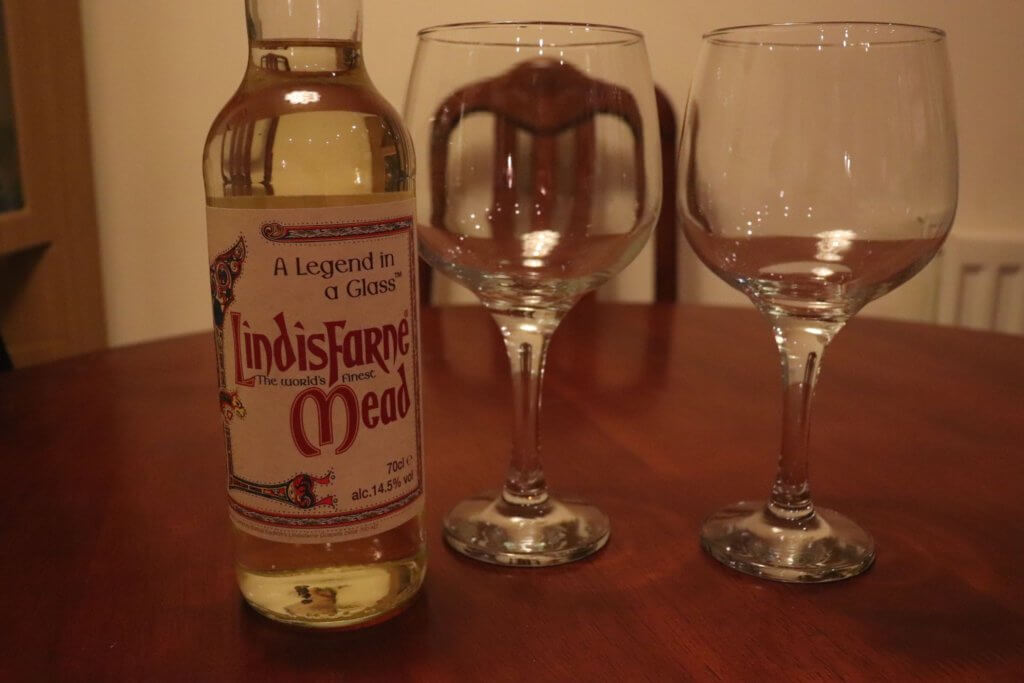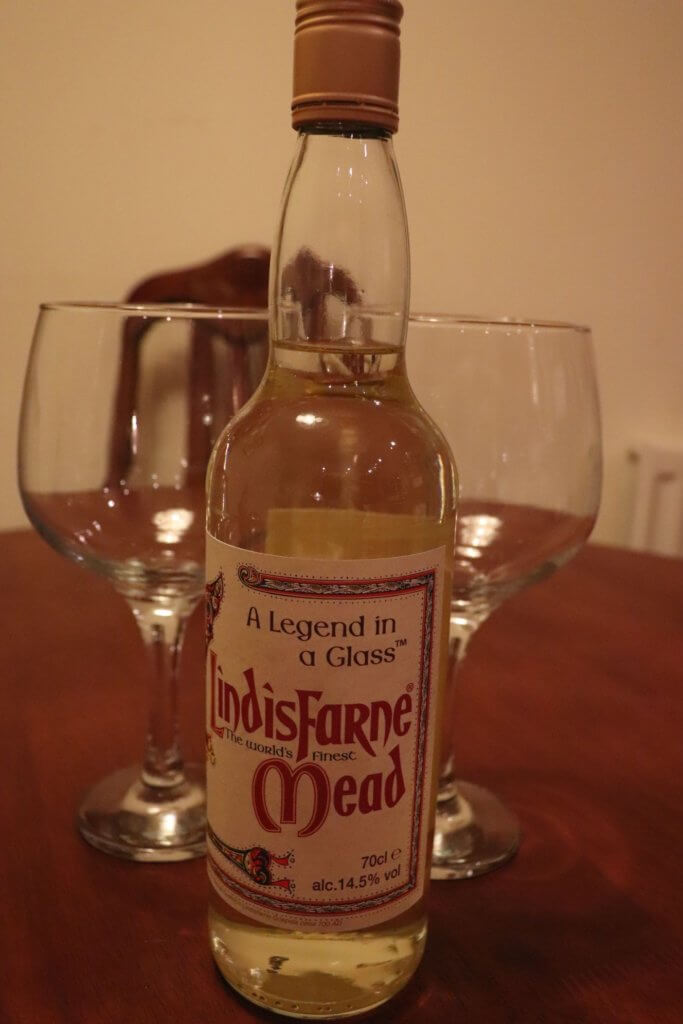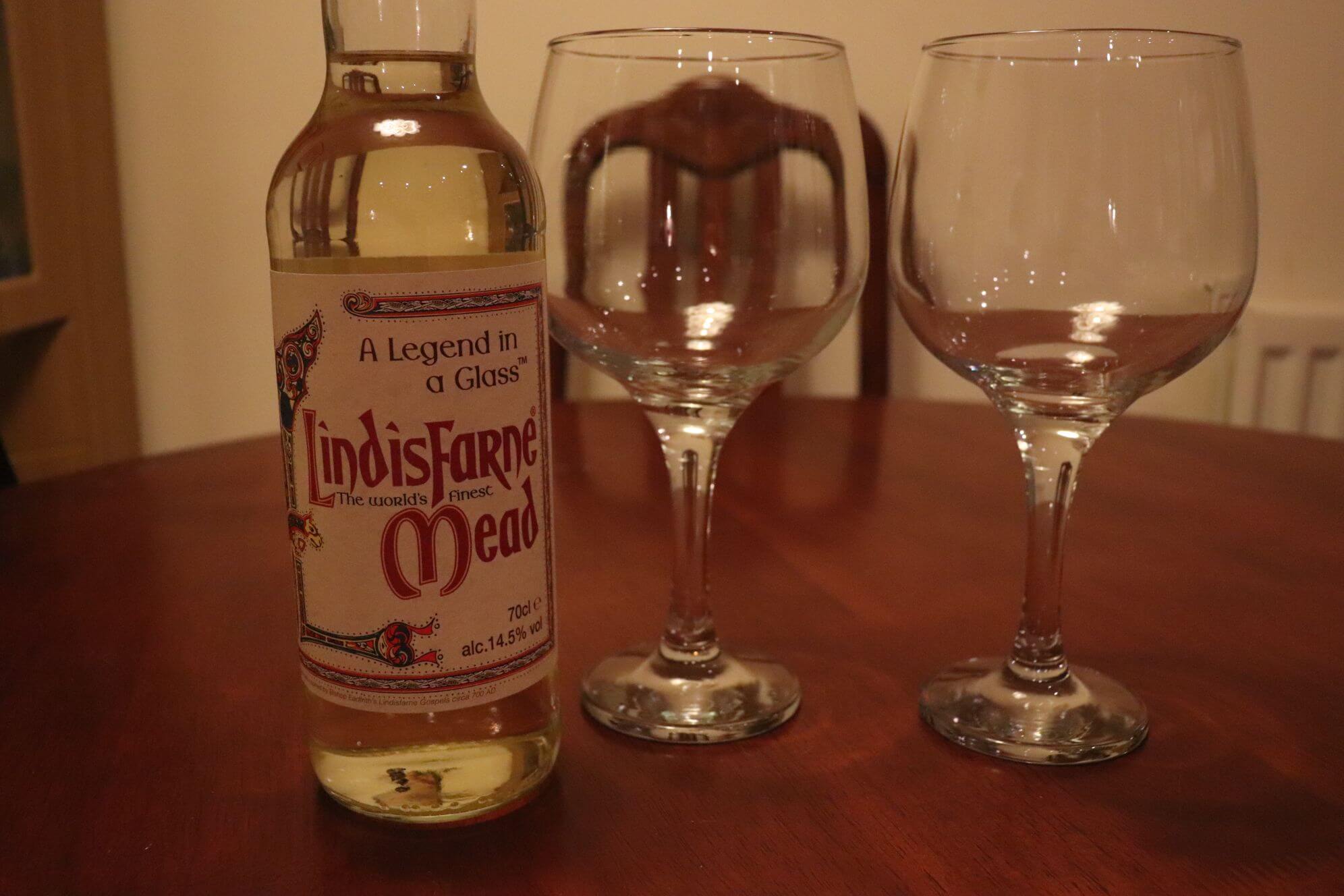[Ad- gifted product] The kind people of Lindisfarne Limited sent us along a bottle of their original Lindisfarne mead to try. Its a drink with a lot of history – predating wines, beers and every modern-convenience. But old doesn’t always mean gold.
Near where I grew up there is a place called Barn Mead, as a matter of fact, a good friend of mine from my schooling days, Sean, lived there. Growing up in Harlow, I was always told about the presence of a lot of historical relevance littered around the region – even though the town itself had only really been thrown together post-WWII it was laid out across half a dozen small villages which had Roman and Anglo-Saxon roots. I’m pretty sure that Barn Mead was simply just somebody lopping ‘Ow’ off the end of ‘Meadow’ but the word Mead had stuck with me since.

It was probably about 7-8 years ago when I first tried a drink of mead, a cheap honey mead which had found its way onto a supermarket shelf. The drink was bitter and sharp, with a dark rough taste at the end, we didn’t enjoy it much, to say the least. I was pretty sure that the bottle I’d found had been made wrong, or I’d left it open for so long that the body of the drink twisted – although I didn’t rush to find another bottle of it.
Last year I travelled to Spain for an event, which you might have read about if you read any of my games writing. There at BeMyHuman there was a small Spanish stall set up in a community kitchen, they were selling their own (Viking Bad Hidromiel) brand of mead. This was much more like a stout or very dense ale, there was still a bitter tang present, but overall it was a much more interesting set of flavours, and there was quite a variety of tastes from type-to-type.
So, when the bottle of Lindisfarne Mead arrived, I had some idea of what to expect.

I was incredibly surprised however, unlike the previous meads that I had drunk, Lindisfarne Mead was much closer to wine. It started off quite sweet and then moved to the small biting aftertaste which you sometimes get with dry white wines. It was a flavour profile which I hadn’t been expecting when I first opened the bottle – I had thought that I would either be drinking it in big ol’ gulps (Quaffing) or be trying to remove a bitter, tart flavour by mixing it with something else. Instead the mead was perfectly enjoyable on its own.
As it stood, we were actually mixing cocktails at the time, we’d somehow wound up with a variety of gin recipes and tonic waters to use, among other things, and so I had a thought about possible other serving options for the mead. I’m sure that traditionalists and historians alike probably cringed at that last sentence.

What we ended up trying out, and with some success, was serving the mead over a generous amount of ice and with a simple curled peel of lemon in the top of the drink. Surprisingly the lemon peel, which looked purely decorative, carried enough of the citrus flavour into the drink, mixing very well with the sweet honey-made taste at the start, and softening the wine-esque bite.
Maybe many of you have thought about dipping into drinking mead as a sort of gimmick due to its long history, that’s completely fair, Lindisfarne Mead actually has an extensive history of its own which ties into the spread of Christianity across Great Britain. Maybe you’re just up for trying out one of the oldest forms of alcoholic beverages. Either way, Lindisfarne’s mead was leagues better than that first mead I tried and is a carefully refined flavour – and that’s more than enough reason to give it a shot in my books.
You can purchase Lindisfarne Mead on Amazon or in various supermarkets.

